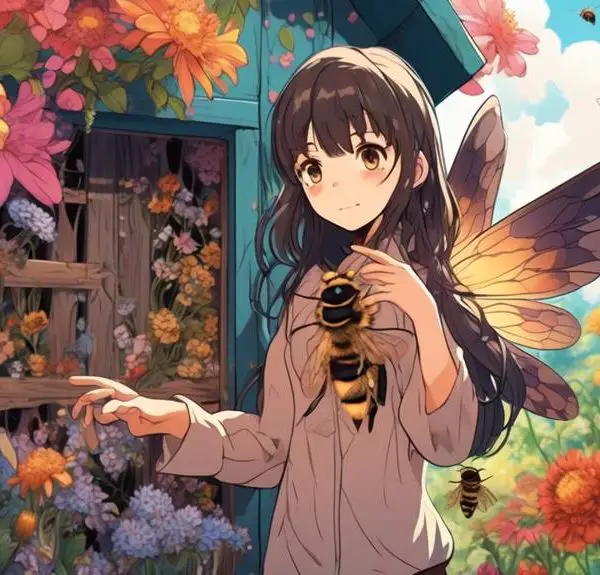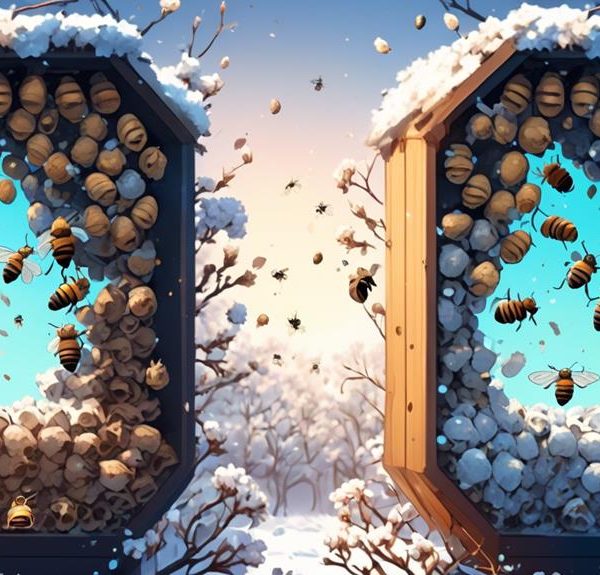Nest builders or not, discover the often overlooked role of male mason bees in the crucial process of pollination.
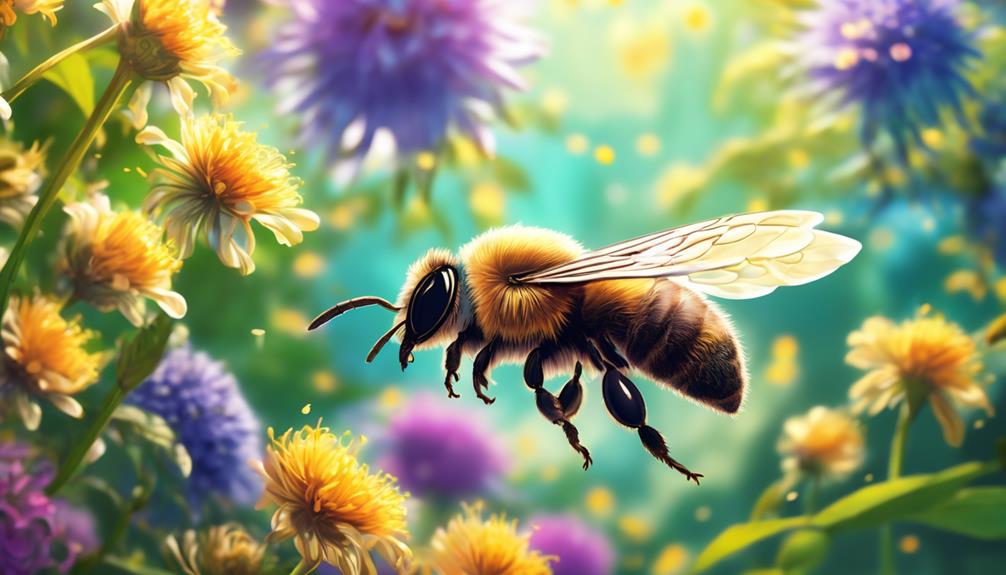
Do Male Mason Bees Pollinate?
You've seen them buzzing about your garden, you've heard of their essential role in our ecosystem, but you might be wondering, do male mason bees actually contribute to pollination?
Mason bees, named for their habit of using mud or masonry in constructing their nests, are known to be prolific pollinators. However, the question of male mason bees' role in pollination isn't as straightforward as one might think.
Stick around to unravel the intricacies of these fascinating creatures and their impact on our environment.
Key Takeaways
- Male Mason bees do not directly participate in pollination.
- Their primary function revolves around mating.
- Male Mason bees trigger the emergence of females, kick-starting the pollination season.
- Male Mason bees do not have the physical capacity to pollinate as they lack the pollen-collecting scopa found on female Mason bees.
Understanding Mason Bees
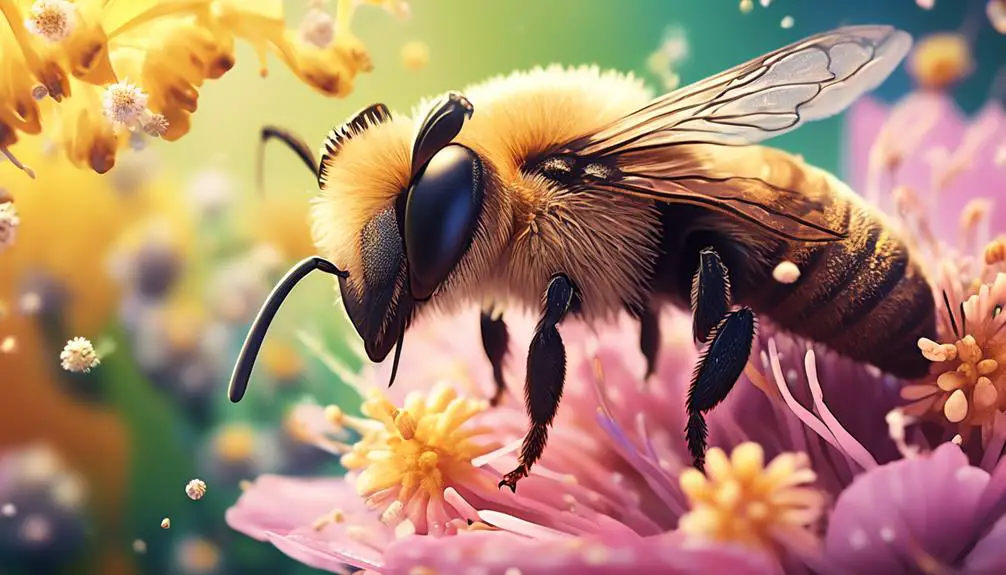
In order to fully comprehend the role of male Mason bees in the process of pollination, it's crucial to first understand the biology, behavior, and habitat preferences of these industrious insects.
You'll find that Mason bees are solitary creatures. Unlike honey bees, they don't build communal hives. Instead, they nest in pre-existing holes in wood or hollow stems, constructing individual cells for their larvae using a mixture of mud and plant material.
In terms of biology, these bees are fascinating. They're small, only about the size of a housefly, and they've a metallic blue or green sheen. They're also cold-tolerant, allowing them to emerge and start pollinating earlier in the spring than other bees.
Behaviorally, Mason bees are gentle and non-aggressive. They don't have a hive to defend, so they're less likely to sting unless threatened. This makes them ideal for urban and suburban gardens where human interaction is inevitable.
Life Cycle of Male Mason Bees
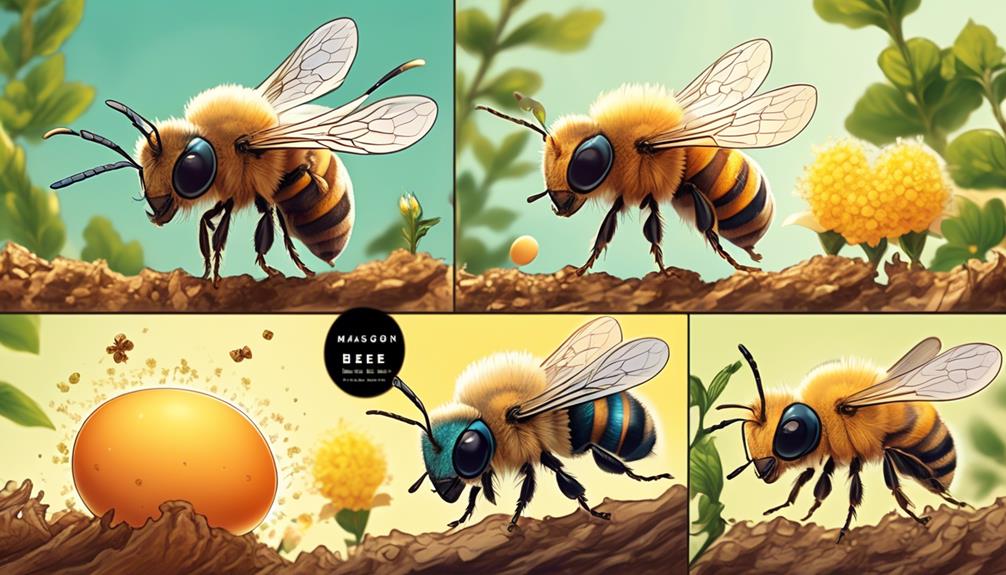
Diving into the life cycle of male Mason bees, you'll discover a fascinating, meticulously timed process that plays a pivotal role in our ecosystem. Your journey begins in early spring, when male Mason bees emerge from their cocoons before the females. They've developed in their nests, packed into small cavities with mud partitions, throughout the winter.
During their brief, two-week life span, the males' sole purpose is to mate with the emerging females. It's a precise, competitive race against time. Once they've completed their primary function, they'll die off, making way for the next generation.
Meanwhile, the females, now fertilized, begin constructing their nests and laying eggs. Each egg is placed in a separate cell with a supply of pollen and nectar, sealed with a mud plug. The eggs hatch into larvae, feed on the stored food, and then spin cocoons where they'll transform into adult bees, closing the life cycle.
In essence, male Mason bees are a pivotal, albeit transient, part of the pollination process. They don't directly pollinate but their role in reproduction ensures the perpetuation of the species, which contributes significantly to our ecosystem's pollination.
This cycle, while brief, is crucial for both the bees and our environment.
Role of Male Mason Bees
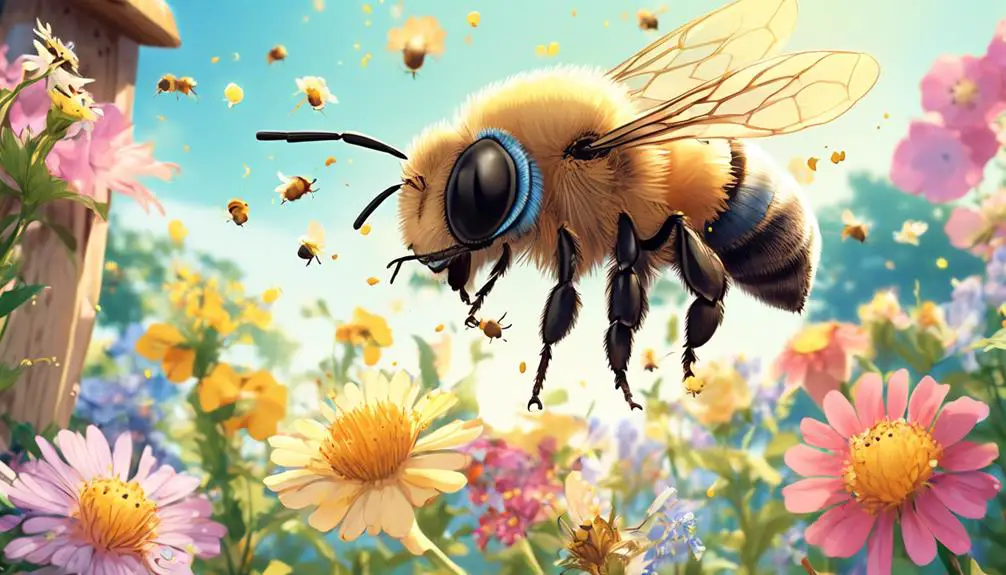
Shifting focus from their life cycle, let's scrutinize the specific role that male Mason bees play in the grand scheme of pollination and ecosystem balance. Unlike their female counterparts, male Mason bees don't directly participate in pollination. They're not equipped with pollen-collecting structures and their primary function revolves around mating.
You might wonder, does that mean they're irrelevant to the pollination process? Not quite. Male Mason bees provide an indirect but crucial contribution to pollination. They're the first to emerge in spring, and their vigorous pursuit of females triggers the females' emergence, thus kick-starting the pollination season.
In addition, their mating activities stimulate the females to start collecting pollen for their offspring. This pollen is gathered from flowering plants, and in the process, pollination occurs. Therefore, while males don't directly transfer pollen, their role in instigating the females' pollination activities is undeniable.
Moreover, male Mason bees also play a vital role in the ecosystem by serving as food for predators, contributing to a balanced food chain. So, while their role might seem minor compared to the females', it's equally vital to the overall ecosystem balance.
Mason Bees and Pollination
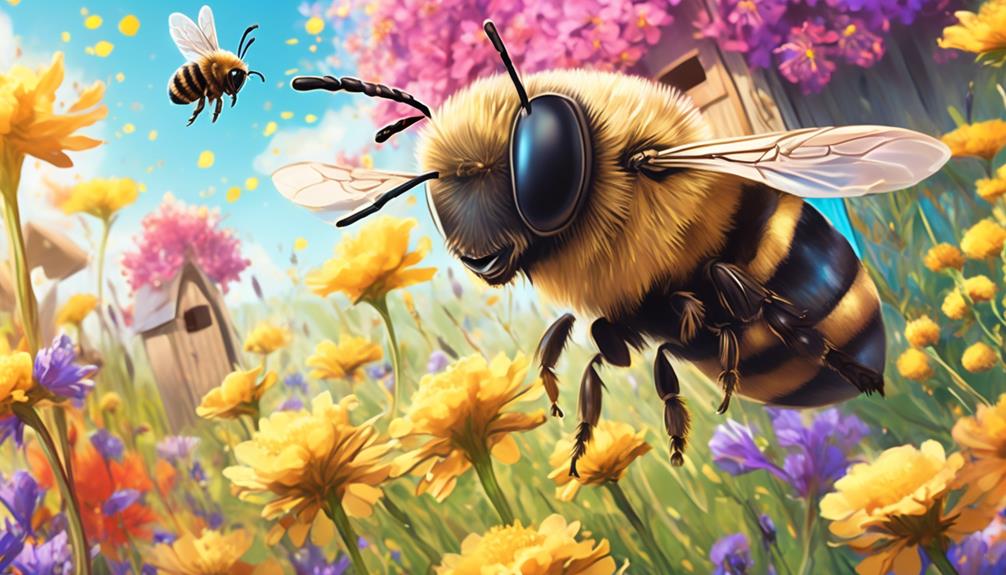
Let's delve into the vital role Mason bees play in the process of pollination, a phenomenon that's critical to the survival of our ecosystems. Mason bees, or Osmia, are solitary bees that are exceptional pollinators. Unlike honeybees, which carry pollen on their hind legs, Mason bees carry pollen on their abdomen. When they visit a flower, more pollen directly contacts the flower's stigma, ensuring efficient fertilization.
You might be wondering, 'How does this process work?' As Mason bees forage for nectar, they inadvertently pick up pollen grains on their furry abdomen. While flying from flower to flower, some of these grains rub off onto the stigma of other flowers, resulting in cross-pollination. This process is essential for the fertilization and growth of many plants.
It's important to note that while both male and female Mason bees visit flowers, it's the females that are the primary pollinators. The males, though they do carry pollen, serve a more significant role in mating rather than pollination. Thus, in understanding the impact of Mason bees, we see the symbiotic relationship between these diligent insects and the plants they pollinate.
Common Misconceptions About Male Mason Bees
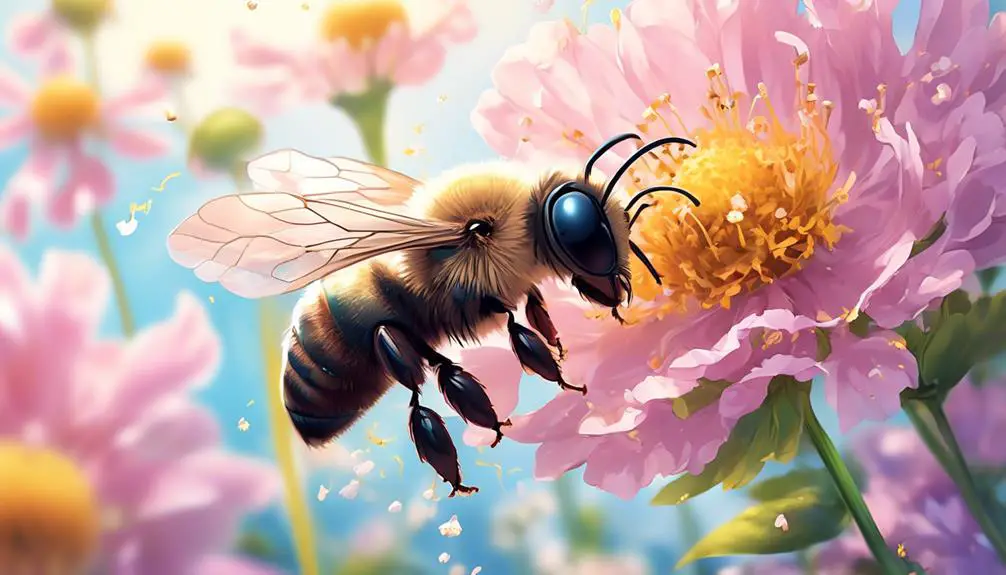
Despite their essential role in the lifecycle of Mason bees, misconceptions about male Mason bees often cloud our understanding of their function and importance.
One common misconception is that male Mason bees are responsible for pollination. In fact, they don't have the physical capacity to pollinate. Their anatomy lacks the pollen-collecting scopa found on the abdomen of female Mason bees, which is crucial for pollination.
Another misconception is that male Mason bees are aggressive. While they do compete for mating opportunities, they lack the stingers that female Mason bees possess. Therefore, they can't sting or harm you in any way.
You may also mistakenly believe that male Mason bees live as long as their female counterparts. However, the truth is that they've a shorter lifespan. Their primary role is to mate with the females, after which they die shortly.
Lastly, you might think that male Mason bees build nests. But it's the females who bear this responsibility. The males' job is to mate, and they don't participate in nest-building or caring for the offspring.
Understanding these misconceptions is key to appreciating the vital yet distinct roles male Mason bees play in our ecosystems.
Conclusion
Yes, male mason bees do pollinate! They play a crucial role in the ecosystem, but often get overlooked. While their lifespan is shorter, their contribution to pollination is significant.
They help in maintaining biodiversity by assisting in the pollination process. Despite common misconceptions, male mason bees are hard workers and are vital to our environment.
So next time you see a mason bee, remember, they're doing their bit for Mother Nature!

